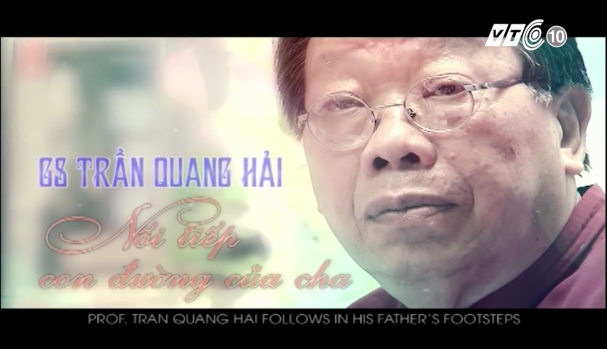INGE R. TITZE : From Aerosmith to Pavarotti — How Humans Sing
From Aerosmith to Pavarotti — How Humans Sing
How Does The Singer’s Voice Produce Those Amazing Sounds?
By Ingo R. Titze

Overview
The Human Instrument
Infographic
How Instruments Make Music
Although the human vocal system is small, it manages to create sounds as varied and beautiful as those produced by a variety of musical instruments. The question is: How can singers produce all those remarkable sounds?
All instruments, including our singing voices, have a sound source, a resonator that reinforces (amplifies) the basic sound and a radiator that transmits the sound to listeners. In people, the source is vibrating vocal folds (vocal cords) of the larynx or voice box; the resonator is the sound-boosting airway above the larynx; and the radiator is the opening of the mouth.
The human voice can create an impressive array of sounds because it relies on non-linear feedback by which a small input can result in a disproportionately large output. One of the voice’s more effective nonlinear mechanisms is inertive reactance, whereby singers create special conditions in their vocal tract to amplify sounds generated by the vocal folds.
To better understand the complex phenomena that produce the incredible sounds acclaimed vocalists demonstrate in the following sound clips and elsewhere, take a look at my article—The Human Instrument—in the January issue of Scientific American.
SOUND CLIPS Steven Tyler
Steven Tyler, lead singer of the rock band Aerosmith, is celebrated for his ability to scream tunefully. Here, he produces several interesting vocal effects. Tyler first uses some inharmonic (noise-like) sounds to match the timbre of his voice to percussive instruments. He also demonstrates a “flip” into falsetto register, but later employs a bright vowel on the word “same” to continue his belt-like voice (as in “belt” it out) into a high pitch.
Georgia Brown
Georgia Brown is a Brazilian pop singer who is noted for her wide vocal range (eight octaves) and is thus classified as a full dramatic coloratura soprano. In this example, she is likely using inertive reactance in her vocal tract to reinforce a very high-pitched whistle voice that she creates with her vocal folds. No vowels are heard because the pitch sits above the first two vocal-tract resonances that define (perceptually) what a vowel is.
Rollin Rachele
Rollin Rachele is one of the world’s foremost overtone singers, a technique in which a person vocalizes two notes simultaneously. Overtone singing and related techniques are most widely recognized in the Tuvan, Mongolian and Tibetan cultures. Rachele never uses the fundamental frequency to change pitch. Rather, he maintains the fundamental frequency as a constant drone, then applies varying vocal tract shapes to resonate a single harmonic of this drone at any one time. By skipping from harmonic to harmonic he can play a tune with these high frequencies, also known as overtones.
1 2 Next »
Joan Sutherland
Dame Joan Sutherland, the renowned Australian operatic soprano, knew instinctively that some vowels cannot be used when singing certain pitches. In this case, she uses a less open mouth shape in her middle pitch range than she does in her high pitch range. One vowel, for instance, sounds more like “oh” in the middle and “ah” at the top. Sutherland alternates between an inverted megaphone (horn-like) shape and a megaphone shape in these vowels to reinforce the sonic energy produced at the vocal folds.
Ethel Merman
On stage, Broadway musical star Ethel Merman belted out songs with precise enunciation and pitch so audiences could hear her even without amplification. Here, she uses bright vowels with high first-resonance frequency to make optimal use of inertive reactance. Pay particular attention to the vowels she uses in “everything,” “roses,” “for” and “me.” The vowels all suggest that she employs the horn-like megaphone vocal-tract shape. But unlike Joan Sutherland, Merman uses the megaphone shape in the middle of her pitch range to reinforce the second harmonic. Sutherland, in contrast, makes use of the megaphone shape only on very high notes to reinforce the first harmonic. Neither female vocalist sings true speech-like vowels.
Luciano Pavarotti
Luciano Pavarotti, the recently deceased Italian operatic tenor, is famed for the brilliance and beauty of his tone. In this example, he uses a vocal production in his high notes that is similar to that which Ethel Merman uses in her mid- to high-pitch range. The male high voice has a strong second harmonic as does the female belt voice. But Pavarotti widens his pharynx (the airway above the larynx) more, producing an additional ring in the voice, while downplaying the more typical twanging sound. As far as timbre is concerned, ring sounds match better with bowed string and woodwind instruments, whereas twanging sounds match better with brass and percussion instruments.
Audio file manifest ETHEL MERMAN – Female belt voice
Clip 1: Minutes 1:35 to 1:51
APA style ref: Styne, J., Sondheim, S. (1959). Everything’s Coming Up Roses [Recorded by E. Merman, S. Black, London Festival Orchestra & Chorus]. On Merman Sings Merman [CD]. London, England: Decca (1972, reissued 2004)
Clip 2: Minutes 2:25 to 2:47
APA style ref: Styne, J., Sondheim, S. (1959). Everything’s Coming Up Roses [Recorded by E. Merman, S. Black, London Festival Orchestra & Chorus]. On Merman Sings Merman [CD]. London, England: Decca (1972, reissued 2004)
Clip 3: Minutes 1:50 to 2:22
APA style ref: Porter, C. (1934). I Get a Kick Out of You [Recorded by E. Merman, S. Black, London Festival Orchestra & Chorus]. On Merman Sings Merman [CD]. London, England: Decca (1972, reissued 2004)
JOAN SUTHERLAND – Female operatic voice
Clip 1: Minutes 5:30 to 5:50
APA style ref: Bellini, V. (1831). Casta diva [Recorded by J. Sutherland, R. Bonynge, London Symphony Orchestra & Chorus]. On Joan Sutherland: The Greatest Hits [CD]. London, England: Decca (1998)
Clip 2: Minutes 4:03 to 4:24
APA style ref: Gounod, C. (1859, Rev. 1869). O Dieu! Que de bijoux! …Ah! je ris de me voir si belle (Jewel song) [Recorded by J. Sutherland, F. Molinari-Pradelli, Orchestra of the Royal Opera House, Covent Garden]. On Joan Sutherland: The Greatest Hits [CD]. London, England: Decca (1998)
STEVEN TYLER – Male rock voice
Clip 1: Minutes 3:24 to 3:45
APA style ref: Aerosmith (1973). Dream On. Aerosmith [CD]. New York: Columbia Records
Clip 2: Minutes 0:56 to 1:22
APA style ref: Aerosmith (1989). Janie’s Got a Gun. Pump [CD]. New York: Geffen Records
LUCIANO PAVAROTTI – Male operatic voice
Clip 1: Minutes 1:45 to 2:06
APA style ref: Verdi, G. (1851). La donna e mobile [Recorded by L. Pavarotti, A. Toscanini, Symphonic Orchestra of Emilia Romagna]. On Luciano Pavarotti in concert [CD]. New York: CBS Records
Clip 2: Minutes 1:20 to 1:35
APA style ref: Verdi, G. (1851). Questa o quella [Recorded by L. Pavarotti, A. Toscanini, Symphonic Orchestra of Emilia Romagna]. On Luciano Pavarotti in concert [CD]. New York: CBS Records
ROLLIN RACHELLE – (Male) Overtone singing (improperly referred to as “throat singing”)
Clip 1: 20 seconds long
APA style ref: Rachelle, R. (1995). Track 18. Overtone Singing Study Guide [Book/CD]. Amersterdam, Netherlands: Cryptic Voices Productions
GEORGIA BROWN – (Female) Whistle voice (not a person whistling!)
Clip 1: Seconds 0:08 to 0:21
Ref: Recording of Georgia Brown: sound clip from:www.dutchdivas.net/nighC.html (link to http://escravosdegeo.sites.uol.com.br/index1.htm) last accessed 12/05/07.
Clip 2: Minutes 0:54 to 1:00
Ref: Recording of Georgia Brown: sound clip from:www.dutchdivas.net/nighC.html (link to http://escravosdegeo.sites.uol.com.br/index1.htm) last accessed 12/05/07.
« Prev 1 2
http://www.scientificamerican.com/article.cfm?id=sound-clips-human-instrument&page=2

